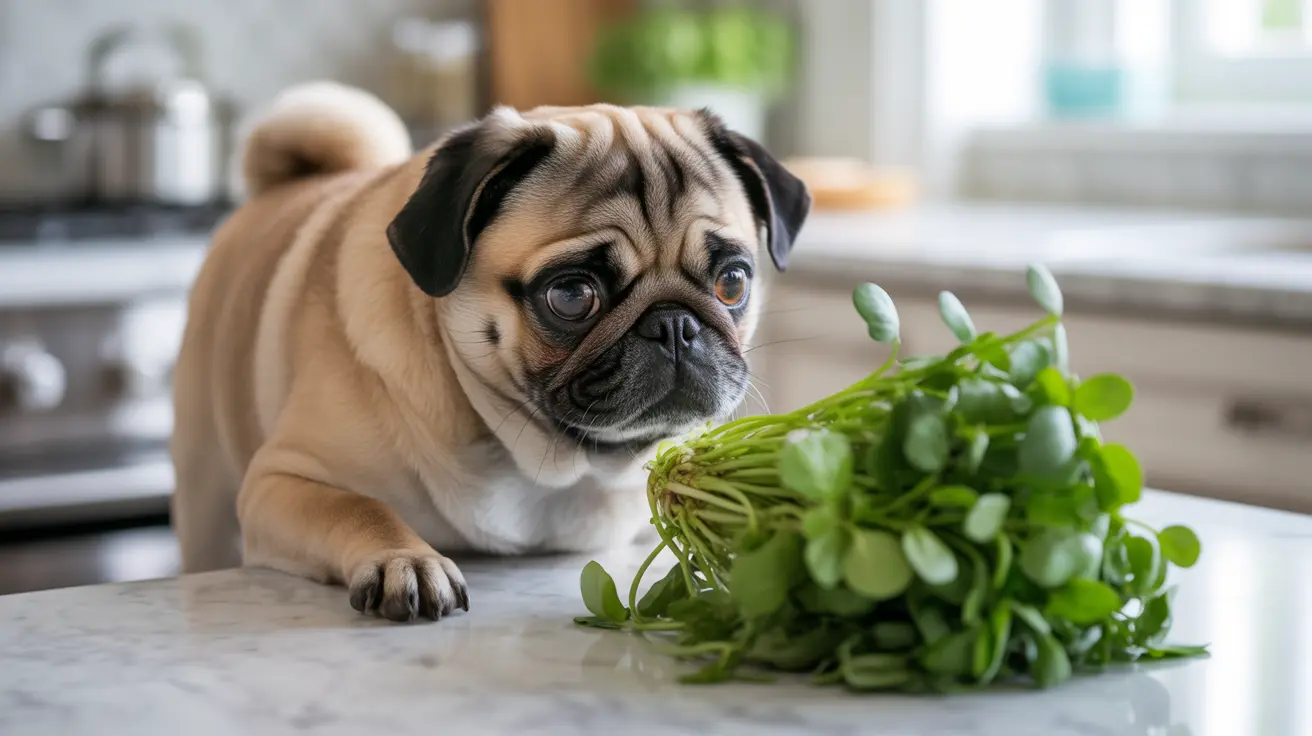If you're wondering whether dogs can eat watercress, the answer is yes – but with important caveats. While this nutrient-rich leafy green offers potential health benefits for dogs, it should be given with caution and only in moderation. Let's explore everything you need to know about feeding watercress to your canine companion.
Understanding the proper way to serve watercress to dogs and being aware of potential risks is crucial for your pet's safety. This guide will help you make an informed decision about including this nutritious green in your dog's diet.
Understanding Watercress and Its Nutritional Value
Watercress is a leafy aquatic vegetable belonging to the Brassicaceae family, alongside broccoli and kale. This nutrient-dense green packs an impressive nutritional punch, containing vitamins A, C, and K, along with minerals like calcium and potassium.
For dogs, these nutrients can support:
- Immune system function
- Bone health
- Vision
- Skin and coat condition
- Overall cellular health
Benefits of Watercress for Dogs
When served appropriately, watercress can offer several health advantages for dogs:
- Antioxidant properties that help fight inflammation
- Immune system support through vitamin C content
- Bone strength enhancement from vitamin K
- Low-calorie option for weight management
- Fiber for digestive health
Potential Risks and Safety Concerns
Despite its benefits, watercress comes with several important risks:
- High oxalate content that could contribute to kidney stones
- Potential bacterial contamination if not properly cleaned
- Risk of digestive upset when consumed in large quantities
- Particular danger from wild watercress due to possible toxins
Safe Serving Guidelines
To safely include watercress in your dog's diet:
- Always wash thoroughly to remove potential contaminants
- Serve in small, bite-sized portions
- Start with tiny amounts to monitor tolerance
- Mix with regular dog food rather than serving alone
- Choose organic when possible to minimize pesticide exposure
Signs of Adverse Reactions
Watch for these symptoms after feeding watercress:
- Vomiting or diarrhea
- Excessive drooling
- Lethargy
- Changes in urination patterns
- Loss of appetite
When to Avoid Watercress
Some dogs should not eat watercress, including:
- Those with kidney problems
- Dogs with sensitive digestive systems
- Puppies with developing digestive systems
- Pets with known cruciferous vegetable sensitivities
Frequently Asked Questions
Is it safe for my dog to eat watercress, and how much is okay?
Yes, dogs can safely eat watercress in small amounts. Start with a few small pieces (about 1-2 teaspoons for medium-sized dogs) mixed into their regular food. Monitor their reaction and never exceed 10% of their daily food intake.
What are the health benefits of feeding watercress to dogs?
Watercress provides vitamins A, C, and K, antioxidants, and minerals that support immune function, bone health, and cellular repair. It's also low in calories and high in fiber, making it beneficial for weight management.
Can watercress cause digestive problems or toxicity in dogs?
Yes, excessive consumption can cause digestive upset, including vomiting and diarrhea. The high oxalate content may also contribute to kidney stone formation in susceptible dogs.
How should I prepare watercress before giving it to my dog?
Thoroughly wash the watercress to remove dirt and potential contaminants. Consider lightly steaming it to reduce the risk of bacterial contamination. Cut into small, manageable pieces and mix with regular food.
What should I do if my dog eats wild watercress or shows signs of illness after eating watercress?
If your dog consumes wild watercress or shows any adverse reactions after eating watercress, contact your veterinarian immediately. Watch for symptoms like vomiting, diarrhea, or unusual lethargy.
Conclusion
While watercress can be a healthy addition to your dog's diet, it's essential to approach it with caution and moderation. Always consult with your veterinarian before introducing new foods, and pay close attention to your dog's response. When served properly, watercress can be a nutritious supplement to your dog's regular diet, but it should never replace their primary food source.






